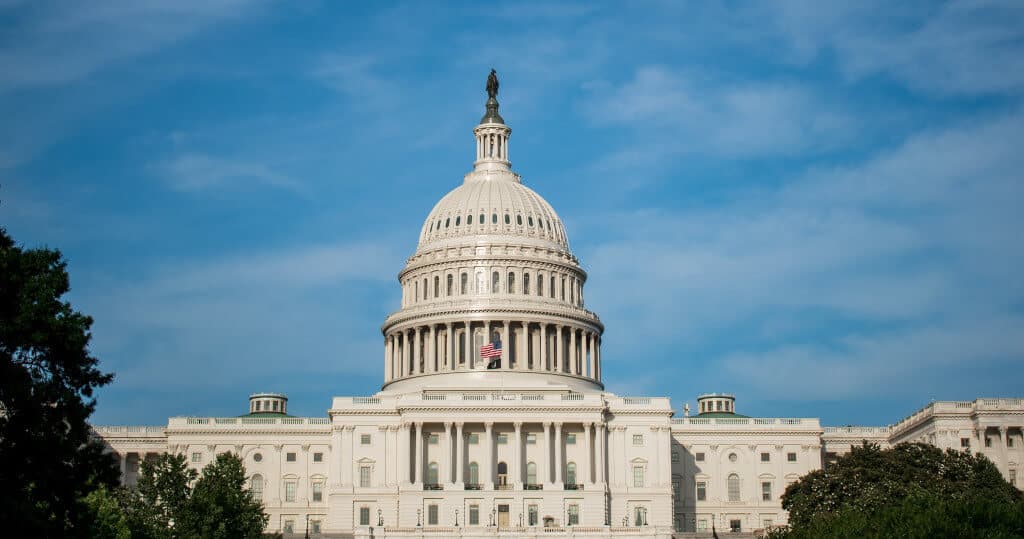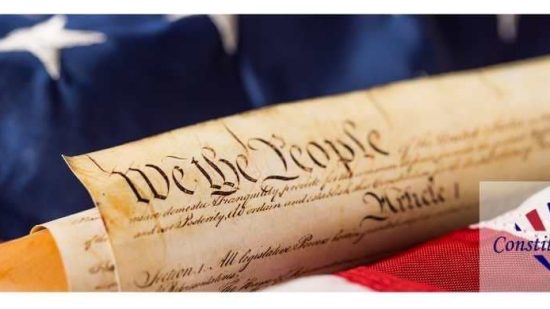What Is the 23rd Amendment?
Section One of the 23rd Amendment gives people who live in the District of Columbia suffrage in Presidential elections. DC voters now have representation in the Electoral College.

These electors vote for President and Vice President based on whichever candidate wins most of the District’s votes.
This constitutional amendment stipulates the overall number of electors that the District of Columbia receives would be the same as the number of Senators they would have if they were a State, but not more than the least populous state, regardless of the population.
The District of Columbia has a delegate that serves in Congress on behalf of the people living in the area. However, that delegate has no voting rights in Congress.

Interpreting the Amendment
The 23rd Amendment of the United States Constitution was proposed by Congress on June 16, 1960, and ratified on March 29, 1961.
Ohio was the state that fulfilled the requirement in Article V of the United States Constitution that three-fourths of states must ratify an amendment before it is passed.

When Ohio approved Amendment XXIII, it became the thirty-eighth state to do so. Six months later, Public Law number 87-389 was enacted by Congress.
The law confirmed the District of Columbia’s logistics concerning the Presidential election.
The constitutional amendment treats the District of Columbia as a state for the Electoral College purposes only. It, therefore, enables the citizens’ votes to be tallied in the nationwide Presidential elections.

A Brief History of the Nation’s Capital
In 1790 Philadelphia was the capital of the United States for ten years after the Constitution was ratified. Before this, New York was the capital. The District of Columbia was named the Government’s official seat in 1800.
When Washington DC was first established, the town’s population was small. It stood at only five thousand people.

However, the District was a federal territory, not a state of the union. This meant that no local government governed the people, so they couldn’t participate in national elections to vote.

Get Smarter on US News, History, and the Constitution
Join the thousands of fellow patriots who rely on our 5-minute newsletter to stay informed on the key events and trends that shaped our nation's past and continue to shape its present.
The population in the District of Columbia continued growing, and by 1960, it reached 760,000 residents.
By this time, the residents now had full citizenship rights and responsibilities and the right to vote on appropriate legislation.
They were supposed to pay all the required taxes and were eligible to be enlisted to perform duties in the military.

The Difference Between the District and a State
For citizens in the other thirteen states, more voting rights were handed to them than district residents. This happened even though the states had a much lower population than the District.
However, the Twenty Third Amendment does not automatically make Washington DC a State. The residents are not granted the number of electors they would have had if Washington DC was a State.
The residents also do not get representation in Congress provided by the Twenty Third Amendment.

Washington DC has only one non-voting representative to the House of Representatives for its residents.
Amendment XXIII does not interfere with how governing takes place in the District. Congress stipulates the District’s form of Government.
Interestingly, a DC Statehood movement aims to achieve statehood for the District of Columbia and full voting representation in Congress.





One Response
The modern day writer/author of this article wrote, “The 2nd Amendment to the Constitution is a single sentence with profound implications. It reads: “A well-regulated Militia, being necessary to the security of a free State, the right of the people to keep and bear Arms, shall not be infringed.”
I believe the write/author does not understand or take into consideration the writing styles and punctuation practice of our 1780-’90 era Founding Fathers…
For example, one sentence may and often does contain more than one thought separated commonly during the 1780-’90 era by innocuous commas (,) or semi-colons (;) or colons (:).
A well regulated Militia, being necessary to the security of a free State, the right of the people to keep and bear Arms, shall not be infringed.
The 2nd Amendment has at least two or three such subjects: a) A well regulated Militia, being necessary to the security of a free State, … Note that a Militia is not a “National Guard”. The National Guard is regulated, controlled and paid by the National Government whereas a “militia” is a strict volunteer organization of pure volunteers who elect their officers and commanders and pay for their own uniforms, equipment and weapons; b) the right of the people to keep and bear Arms, Note this means exactly what it reads…the RIGHT to KEEP and BEAR, i.e. carry Arms and c) shall not be infringed. Note this subject applies to either or both subject “A well regulated Militia” and/or “the right to keep and bear Arms. Note: “shall not be infringed” meaning will not be infringed upon by Government…